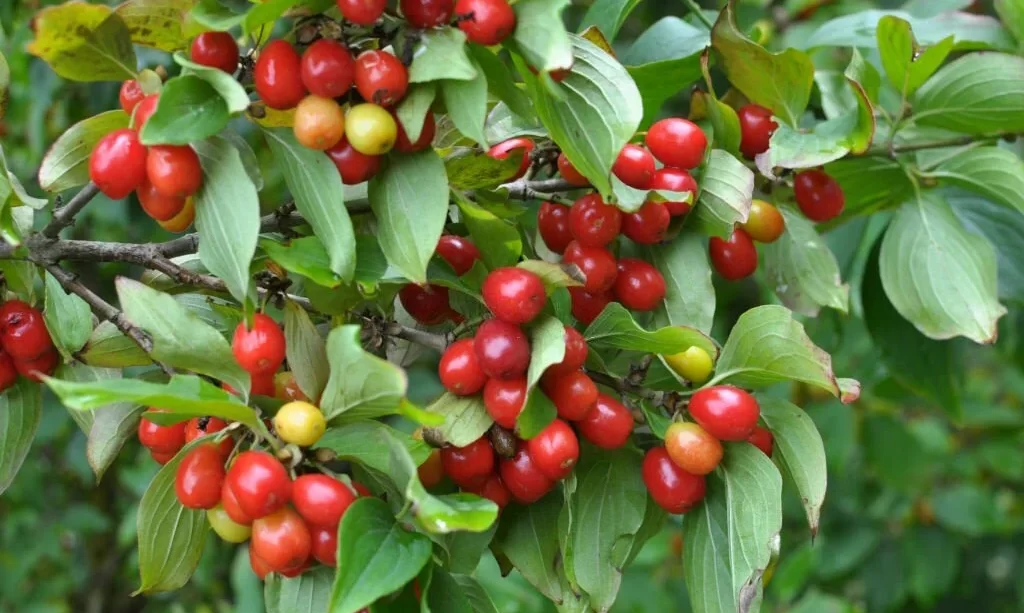Dogwood trees are celebrated for their ornamental beauty, adorning gardens and landscapes with their iconic blossoms and, at certain times of the year, with colorful berries. These striking trees, known for their elegant charm, have a captivating secret – their berries. However, a crucial question lingers: Are dogwood berries poisonous? In this article, we embark on a journey to uncover the truth about dogwood berries, exploring their potential toxicity and their significance for humans and wildlife. Understanding the safety of these fruits is key to appreciating the many facets of dogwood trees.
The Dogwood Tree: An Overview
Before diving into the world of dogwood berries, let’s take a moment to get to know the dogwood tree:
- Botanical Elegance: Dogwoods, scientifically known as Cornus, encompass various species celebrated for their aesthetic appeal. They are renowned for their iconic spring blossoms, which can be white, pink, or red, depending on the species.
- Garden Grandeur: Dogwood trees are popular choices in gardens and landscapes due to their stunning floral displays. Beyond their captivating blossoms, dogwoods also produce berries that contribute to their visual allure and ecological significance.
Types of Dogwood Berries
Dogwood trees produce a variety of berries, adding to their seasonal splendor. Here are the main types of dogwood berries:
- Flowering Dogwood (Cornus florida): This native North American species produces red berries. They are typically round, with a small pit in the center, and they are often consumed by wildlife.
- Kousa Dogwood (Cornus kousa): The Kousa dogwood, native to East Asia, produces berries that resemble raspberries in shape and have a unique lumpy appearance. They are generally larger than those of the flowering dogwood.
- Other Species: In addition to these primary species, various other dogwood species exist, each with its distinct characteristics and types of berries. These berries may vary in color and size depending on the species.
Understanding the diversity of dogwood berries and the different dogwood species is essential for comprehending their potential edibility and significance, both in horticulture and the natural world. In the following sections, we will explore whether dogwood berries are poisonous, their historical and cultural significance, and their role as a vital food source for wildlife.
Potential Toxicity of Dogwood Berries
The potential toxicity of dogwood berries is a matter of concern for those who come into contact with these fruits. While dogwood berries are not generally considered highly toxic to humans, there are some important considerations to bear in mind:
- Mild Toxicity: Dogwood berries, particularly those of the flowering dogwood (Cornus florida), are mildly toxic to humans. They contain a bitter-tasting substance known as tannin, which can lead to gastrointestinal discomfort if ingested in large quantities.
- Avoid Consumption: It is advisable to avoid consuming dogwood berries as a precaution. The mild toxicity and bitter taste serve as natural deterrents to discourage their consumption.
- Potential for Allergic Reactions: While the berries themselves may not be highly toxic, some individuals may be sensitive or allergic to certain components of the fruit. As with any plant or food, it’s essential to be cautious, particularly if you have allergies.
Historical and Cultural Significance
The history of dogwood berries and their cultural significance is a fascinating aspect of these fruits:
- Native American Traditions: In Native American cultures, some tribes utilized the flowering dogwood’s berries as a source of dye for textiles and body paint. While this may not involve consumption, it demonstrates the historical utility of the berries.
- Symbolic Importance: In Christianity, the dogwood tree holds symbolic significance. Legend has it that the dogwood tree once bore large, edible fruits. However, after being used for the crucifixion of Jesus, the tree was cursed, resulting in smaller, inedible fruits. This symbolic narrative does not reflect the actual edibility of the berries.
- Cultural References: Dogwood trees have also appeared in literature and folklore, often associated with themes of beauty, resilience, and the changing seasons.
Understanding the mild toxicity of dogwood berries and their historical and cultural significance provides a broader perspective on these colorful fruits. In the following sections, we will delve into the role of dogwood berries as a vital food source for wildlife and their ecological significance.
Wildlife and Dogwood Berries
Dogwood berries play a crucial role in providing sustenance for wildlife, particularly birds and other small animals. These colorful fruits are a valuable food source and contribute to the ecological diversity of natural habitats:
- Birds: Dogwood berries, with their bright colors and nutritional value, are a favorite of many bird species. Robins, cedar waxwings, and thrushes, among others, eagerly consume these berries. Dogwood trees, thus, contribute to the well-being of avian populations.
- Squirrels: While birds are the primary consumers of dogwood berries, squirrels and other small mammals may also nibble on them, contributing to the dispersal of the tree’s seeds.
- Ecological Significance: The role of dogwood berries in the ecosystem is significant. By providing a reliable food source, these trees support local wildlife populations and play a part in maintaining the delicate balance of nature.
Conclusion
In the world of horticulture, dogwood trees stand out for their ornamental beauty and their vibrant, eye-catching berries. The question of whether dogwood berries are poisonous has been explored, revealing that while they may be mildly toxic to humans, their primary role is as a food source for wildlife. These berries, with their ecological importance, provide sustenance to various bird species and other small animals, enriching the biodiversity of their habitats.
As we conclude this exploration, it is essential to appreciate dogwood trees for their multi-faceted contributions to the natural world. Understanding their significance as an ecological resource, their historical and cultural connections, and the precautions associated with their mild toxicity allows us to better appreciate the role they play in both our gardens and the broader ecosystem. Whether admired for their picturesque blossoms or colorful berries, dogwood trees continue to enchant and enrich our connection to the natural world.



